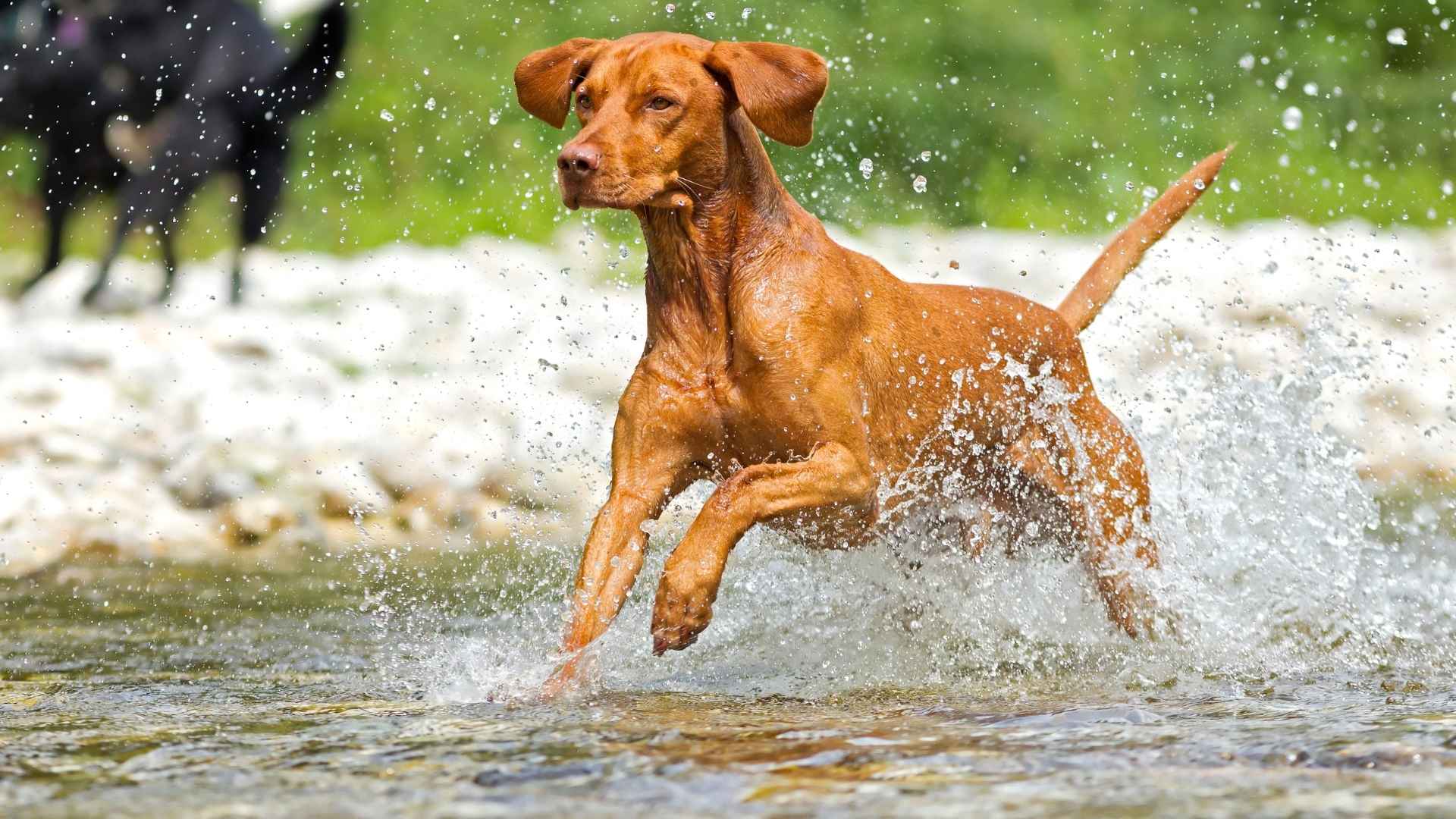It’s not just their striking coats—it’s their sharp instincts, boundless stamina, and unshakable loyalty that makes brown hunting dog breeds such incredible partners in the field. These dogs aren’t just hunters; they’re athletes, trackers, and devoted companions, bred for generations to excel in the wild.
What sets them apart? Their keen noses can lock onto the faintest scent, their agile bodies move effortlessly through rugged terrain, and their intelligence makes training a breeze. Whether flushing out game, retrieving with precision, or holding a steady point, these dogs thrive on action.
But it’s not all about the hunt. Brown hunting dogs are as loving at home as they are fierce in the field. Their friendly nature and unwavering devotion make them fantastic family pets. So whether you’re an avid hunter or just love an active, loyal companion, these dogs bring the best of both worlds.
Brown Hunting Dog Breeds
1. Labrador Retriever
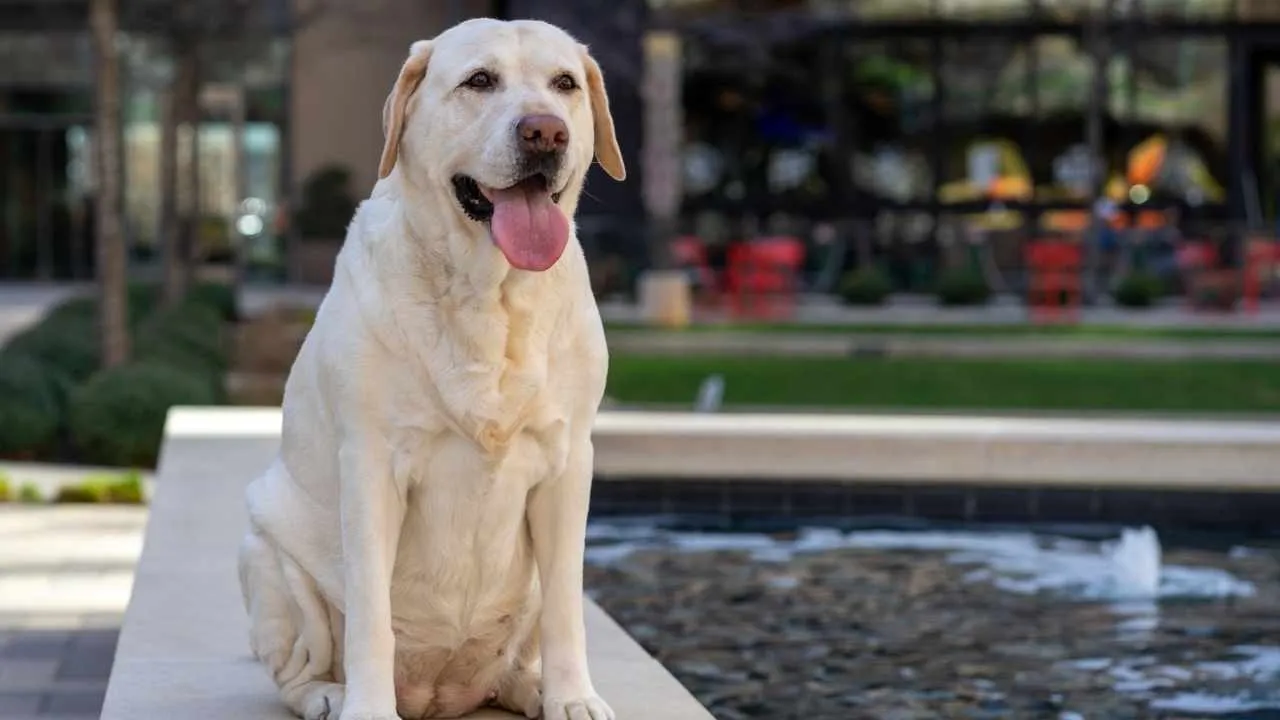
Labrador Retrievers aren’t just popular—they’re powerhouses in the hunting world, says Orvis. These dogs thrive in the field with their natural retrieving instinct and an endless love for the water. Their webbed feet and thick, water-resistant coats make them perfect for duck and waterfowl hunting, no matter how cold the conditions get.
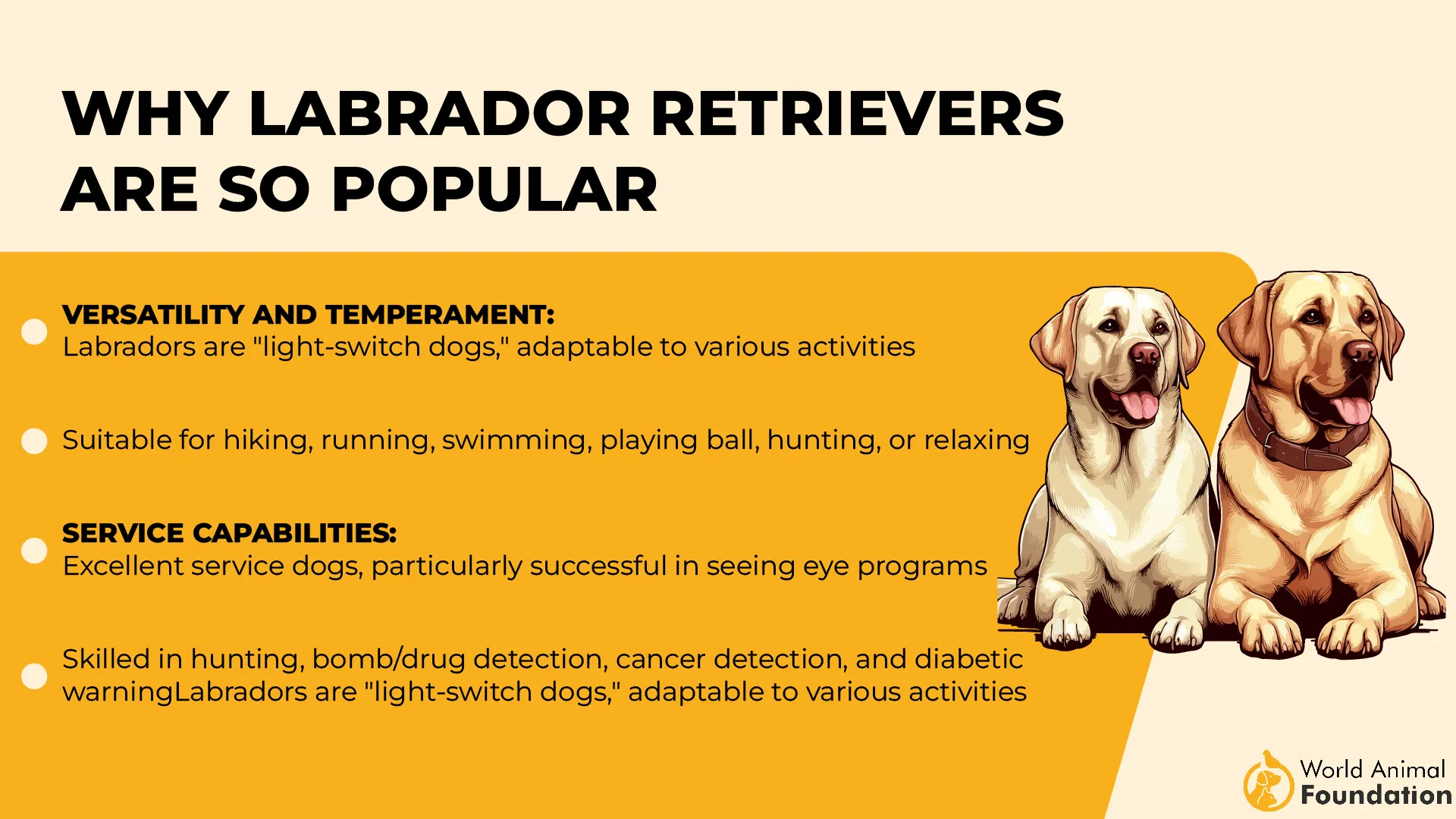
But it’s not just about swimming—Labs have an exceptional nose. Whether tracking wounded game or sniffing out birds in thick cover, their scenting ability is on another level. They’re quick learners, too, mastering commands and hand signals with ease. That’s why they dominate both hunting and search-and-rescue work.
If you’re looking for a dog that can go all day without tiring, a Lab is your best bet. They’re built for endurance, making them ideal for long hunts or active families who love the outdoors. Plus, their friendly nature means they’re always up for an adventure—whether it’s in the field or at the lake.
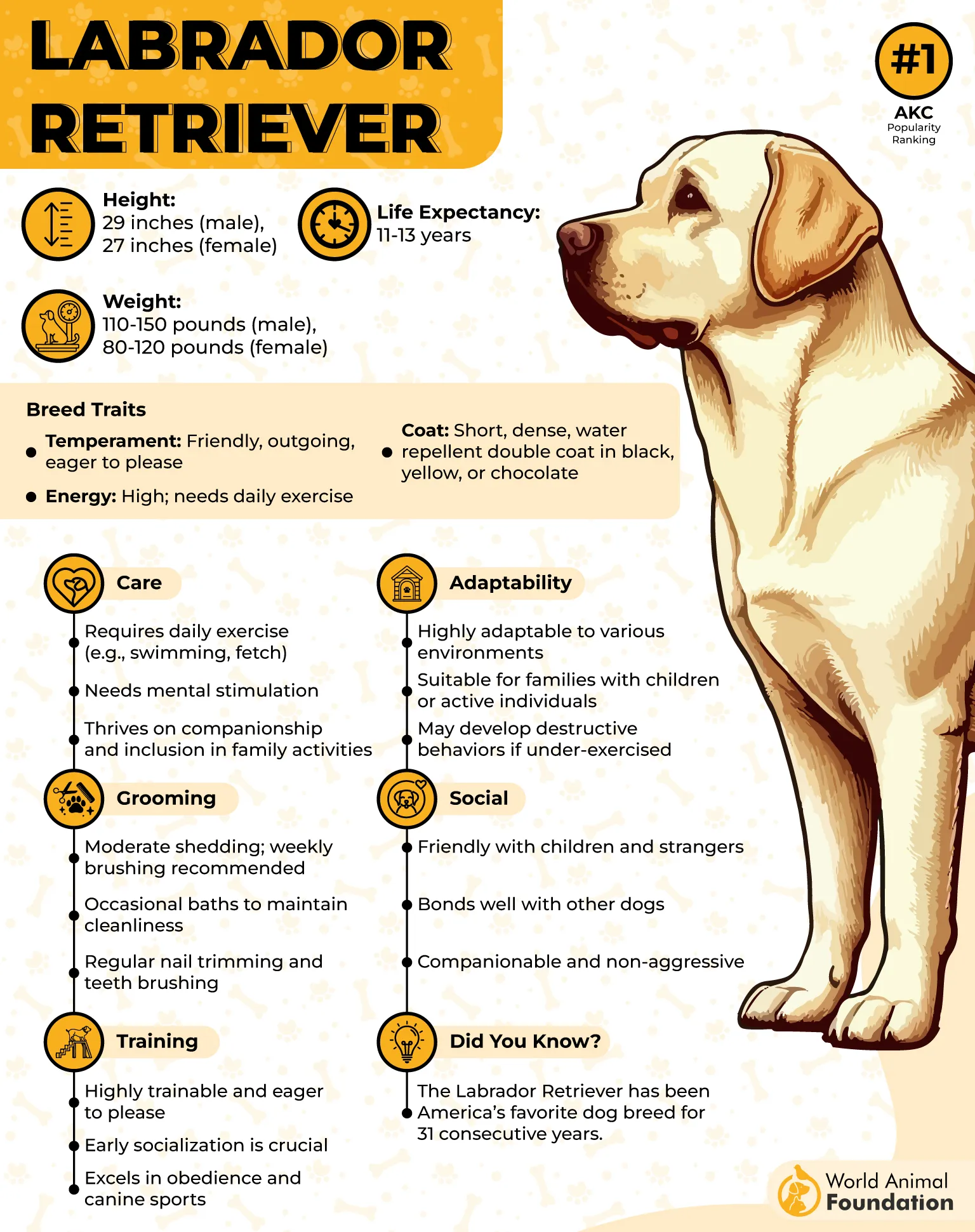
Training a Lab is a breeze compared to more stubborn breeds. They live to please and respond well to positive reinforcement. Want a dog that listens, learns, and loves working? A well-trained Lab will never let you down. These incredibly obedient dogs are a favorite among professional trainers and first-time owners alike.
Unlike some dogs that get distracted or rough with a game, Labs have a soft mouth. That means they carry birds and small game without damaging them. Hunters trust them to bring back waterfowl in perfect condition, making them the ultimate partner in the field.
2. Chesapeake Bay Retriever
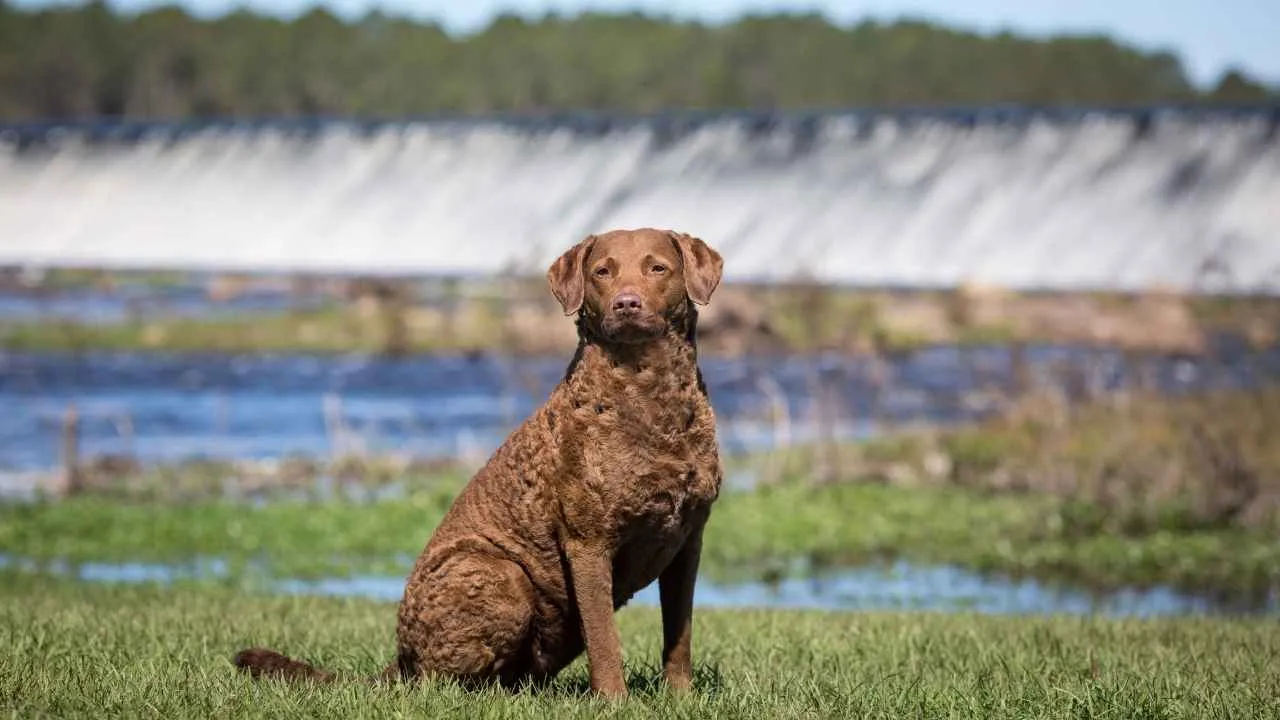
These dogs were built for extreme conditions, with thick, oily coats that repel water and keep them warm even in icy environments. While some retrievers might hesitate in rough waters, a Chessie will charge right in, ready to retrieve ducks no matter how strong the current is.
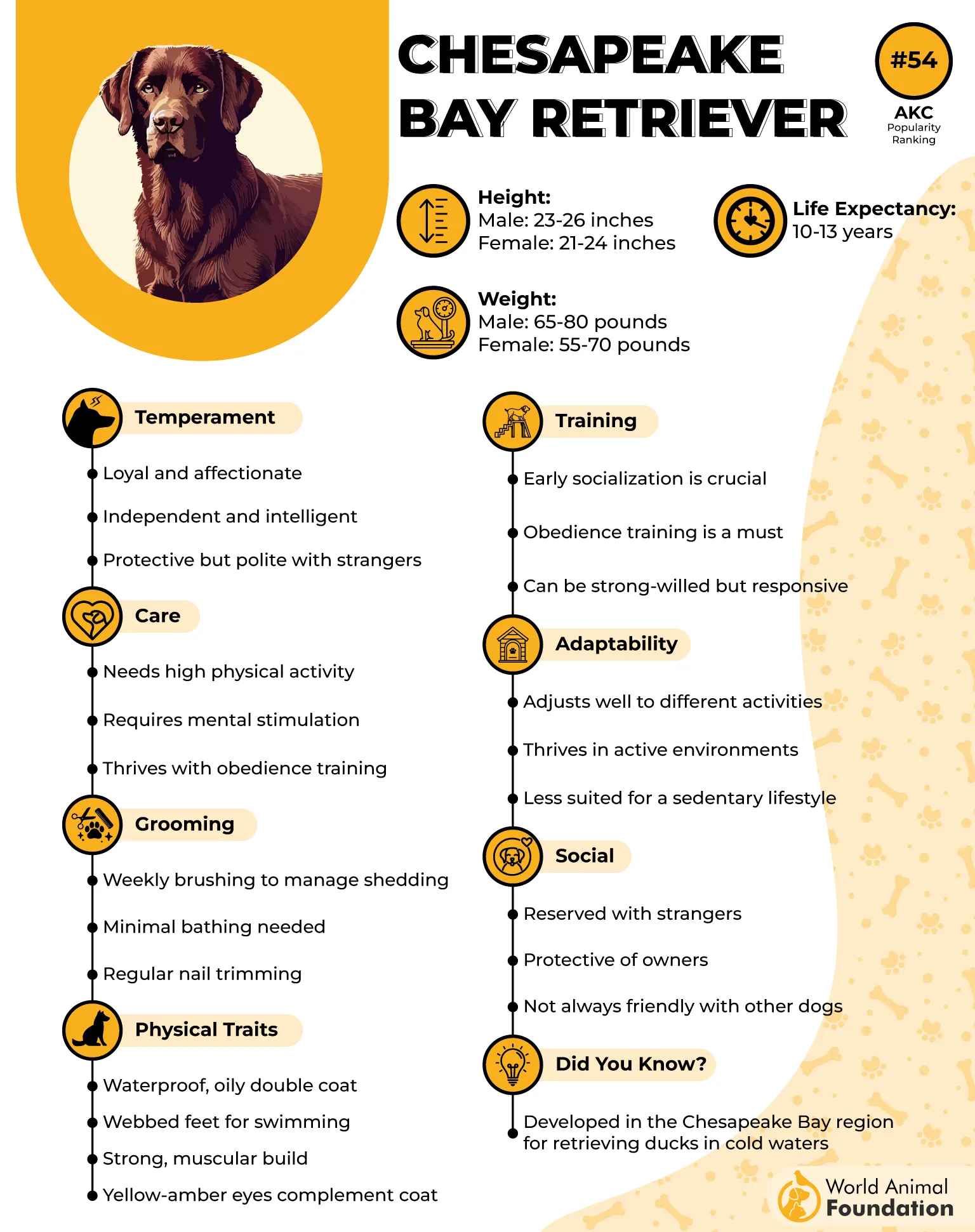
What makes them different from other retrievers? It’s their independent and strong-willed personality. Unlike Labs, Chessies aren’t overly eager to please—they’re smart, intelligent, and stubborn, and they prefer to do things their way, says Omlet. That’s not a bad thing, though. It just means they’re excellent at problem-solving in the field.
Another standout trait? Their incredible protective instinct. Most retrievers are friendly to everyone, but Chessies form deep bonds with their families and can be wary of strangers. That’s why they’re fantastic watchdogs as well as hunting companions. Need a dog that’s both a fierce hunter and a loyal guardian? A Chesapeake Bay Retriever checks both boxes.
Chessies aren’t just about brute strength—they have an exceptional nose that allows them to track game over long distances. They can pinpoint a downed bird in dense marshes or heavy cover with astonishing accuracy. Even in bad weather, when scent trails disappear for other dogs, Chessies stay locked in, determined to complete the job.
And let’s talk about endurance—these dogs are unstoppable in the field. Whether retrieving dozens of ducks in a day or running for miles on end, their stamina is unmatched. While other dogs might slow down, a Chessie just keeps going. If you’re an avid hunter, this breed can definitely keep up.
3. Boykin Spaniel
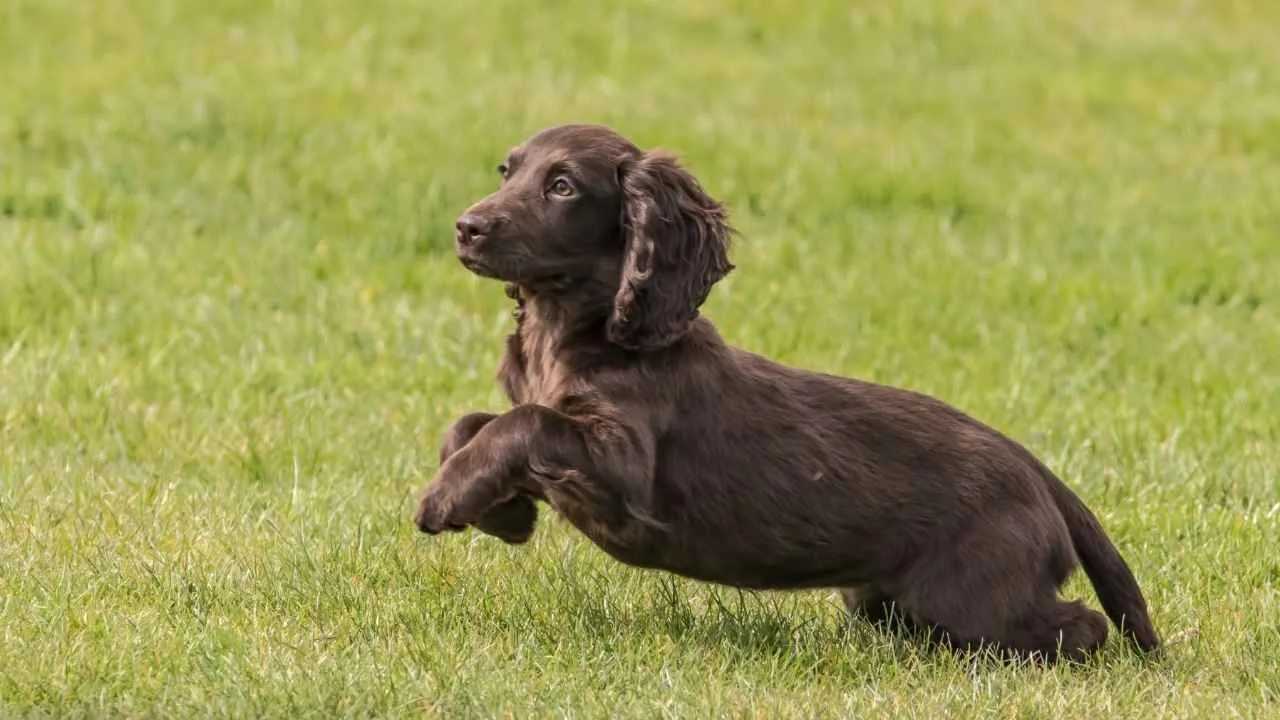
Need a hunting dog that’s small enough to fit in a boat but tough and strong enough to retrieve all day? Enter the Boykin Spaniel. This breed might be smaller than retrievers, but don’t let that fool you—Boykins are built for hard work. Developed for turkey and waterfowl hunting in the swamps of South Carolina, they have an unstoppable drive and a natural talent for flushing and retrieving games.
What sets them apart? Their versatility. Unlike larger retrievers that specialize in water or land hunting, Boykins do both with equal skill. Whether you’re in a boat chasing ducks or in thick cover flushing out game birds, this little powerhouse can handle it all. Their small size makes them easy to transport.

Boykins has boundless energy and a work ethic that’s hard to match. They don’t just retrieve game; they do it enthusiastically, with their tails wagging the entire time. This dog stays excited about hunting from dawn till dusk. Got the stamina to keep up? Because this breed never seems to run out of fuel!
One of their biggest strengths? Boykins are intelligent, states AKC. Boykins learns commands quickly and responds well to positive reinforcement. They love having a job to do, and they excel in both hunting and obedience training. Keeping training sessions fun and engaging is the key to their success.
Boykins also have a water-resistant coat that helps them excel in wet environments. Their wavy, chocolate-brown fur keeps them warm and protects them from harsh elements. Plus, their webbed feet make them natural swimmers, allowing them to retrieve game from lakes, swamps, and marshes with ease.
4. Bloodhound
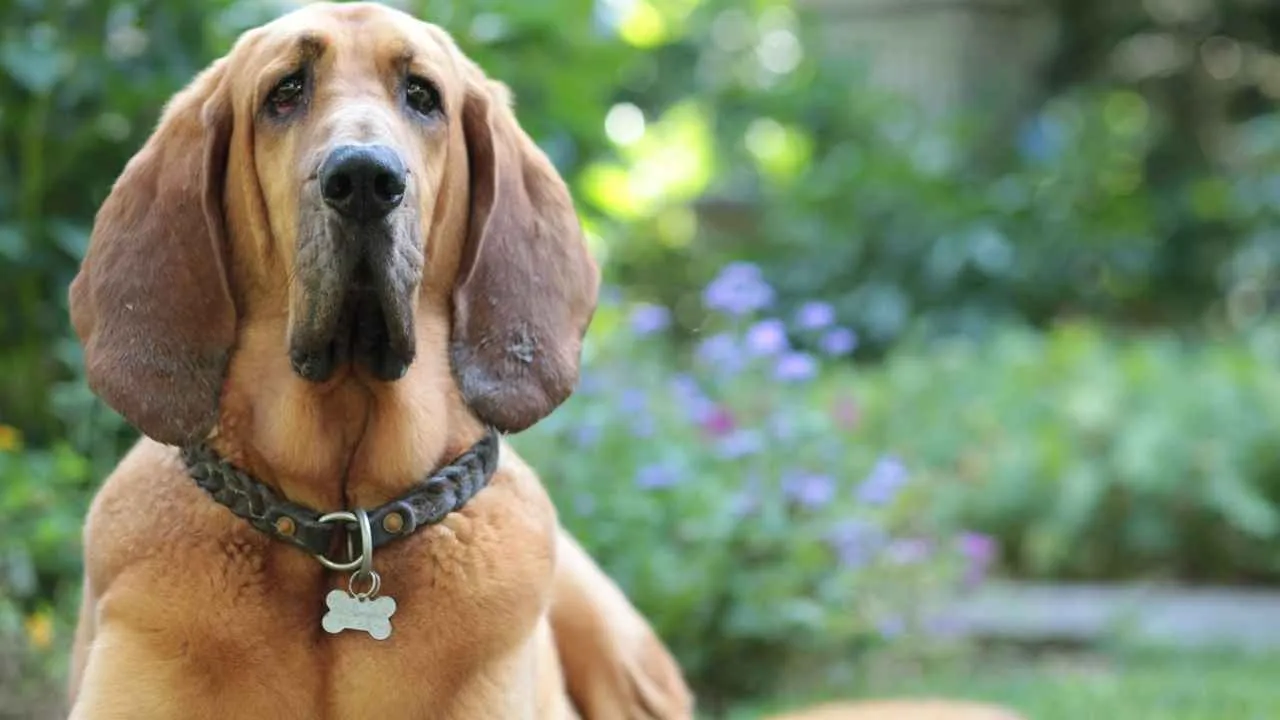
These droopy-faced detectives are legendary for their tracking abilities, capable of following a scent trail for miles without losing focus. Bloodhounds are widely used in search and rescue operations and law enforcement. How do authorities find lost people in dense forests? Chances are, a Bloodhound was leading the way!
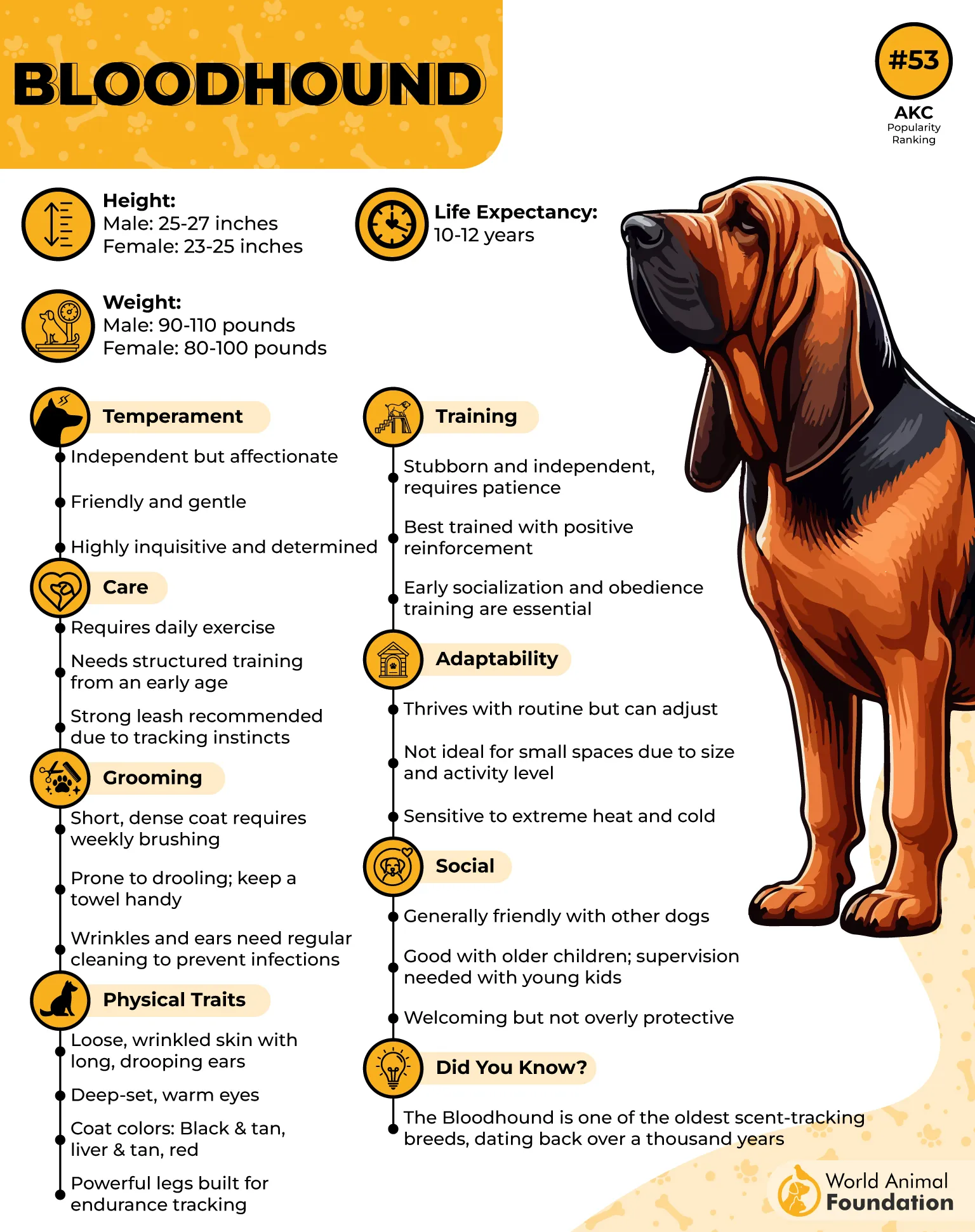
Bloodhounds have nearly 300 million scent receptors, more than any other breed. Their long, floppy ears help sweep scents toward their nose, while their loose, wrinkled skin traps odors, enhancing their tracking ability. Once they lock onto a trail, nothing can distract them, not even food or loud noises.
According to WebMD, Bloodhounds are a lazy breed but incredibly persistent trackers. They’ll methodically follow a scent trail no matter how long it takes. If you’re looking for a dog to chase down fast-moving prey, this isn’t the breed for you. But if you need a dog that can track wounded game across vast distances—even days after it was shot—Bloodhounds are unmatched.
Their stubborn nature is both a strength and a challenge. While they excel at scent work, they’re not the easiest breed to train. If they catch an interesting scent during training, expect them to ignore your commands and follow their nose instead. Patience and positive reinforcement are key when working with these headstrong hounds.
One thing many people don’t realize? Bloodhounds drool—a lot. Their loose jowls mean they’re constantly dripping saliva, especially after drinking water. If you’re a clean freak, be prepared to wipe slobber off your floors, furniture, and even your clothes.
5. German Shorthaired Pointer
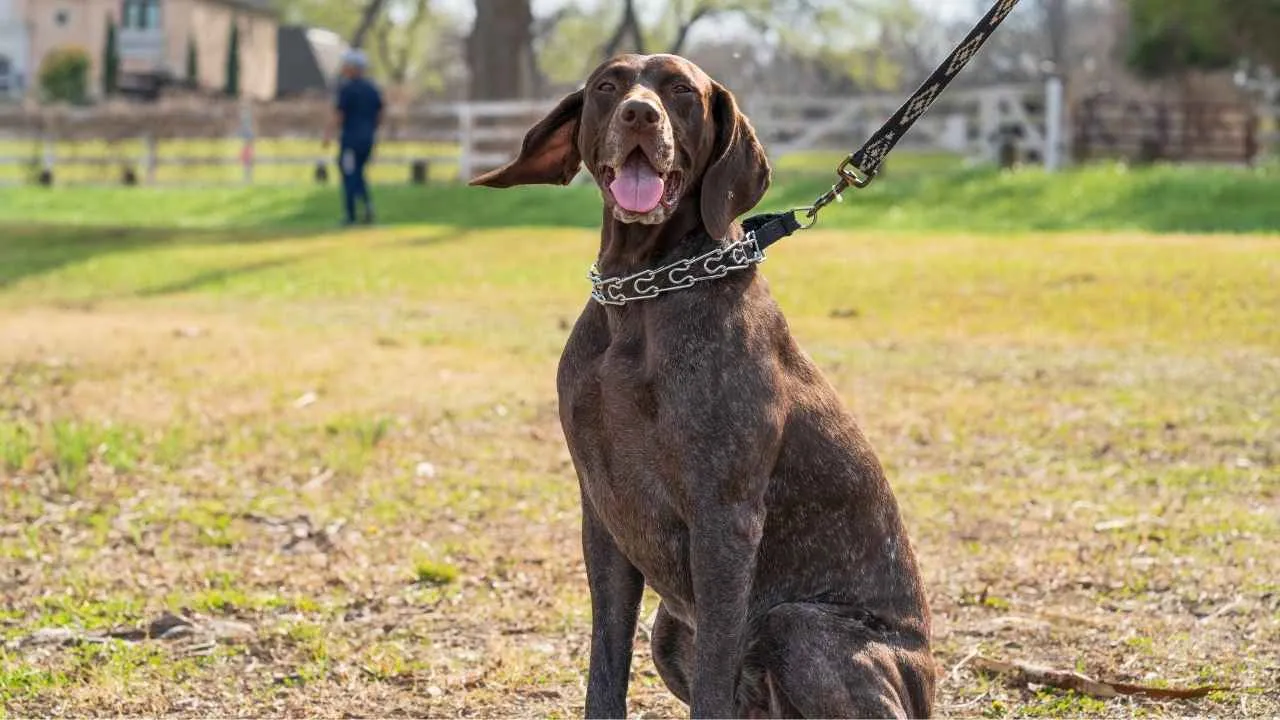
Meet the German Shorthaired Pointer (GSP)—a breed built for speed, endurance, and pinpoint accuracy. These high-energy hunting dogs don’t just retrieve—they point, track, and even take down prey. Whether hunting waterfowl, upland game, or big game, a GSP is the ultimate all-terrain, all-purpose hunting companion.
What makes them so good at hunting? It’s all in their muscular build and boundless energy, says PetMD. GSPs are lightning-fast sprinters with streamlined bodies designed for agility and endurance. Unlike bulkier hunting dogs, they can cover vast distances without tiring, making them ideal for long hunting trips.
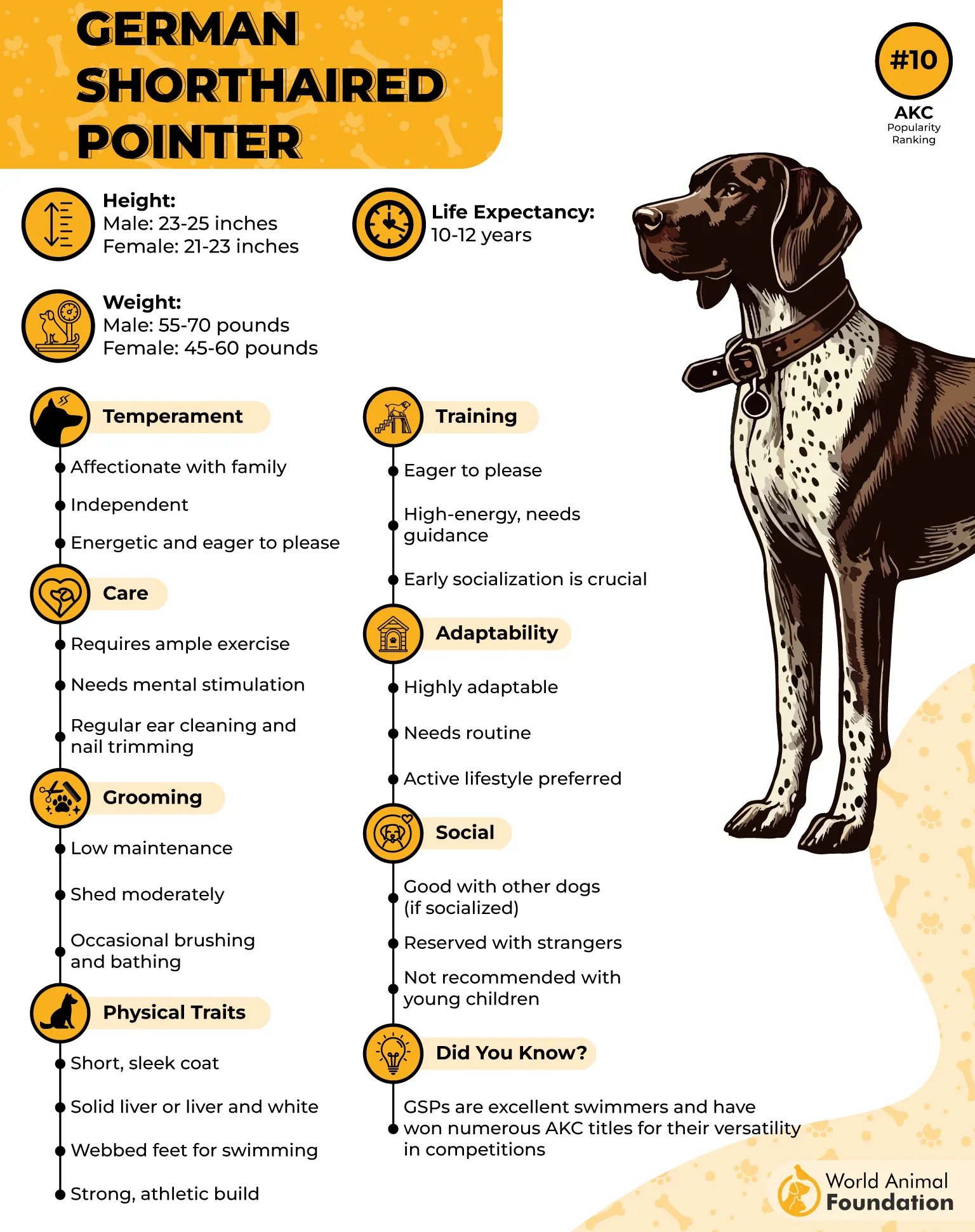
Their instincts are razor-sharp. From a young age, German Shorthaired Pointers show a natural ability to point and retrieve. When they lock onto a target, they freeze, their tail straight and their body motionless. This pointing behavior helps hunters spot prey before taking a shot.
But their talents don’t stop on land. Unlike many hunting breeds, GSPs are strong swimmers, thanks to their webbed feet and water-resistant coats. Whether it’s retrieving ducks from icy lakes or chasing down a target in marshy terrain, these dogs are just as effective in water as they are on dry land. That’s why they’re favorites among waterfowl hunters.
Speaking of exercise, GSPs aren’t the type to lounge around all day. They need intense physical activity, or they’ll turn destructive. Long runs, hiking, and advanced training exercises are a must to keep their minds and bodies engaged.
6. Irish Setter
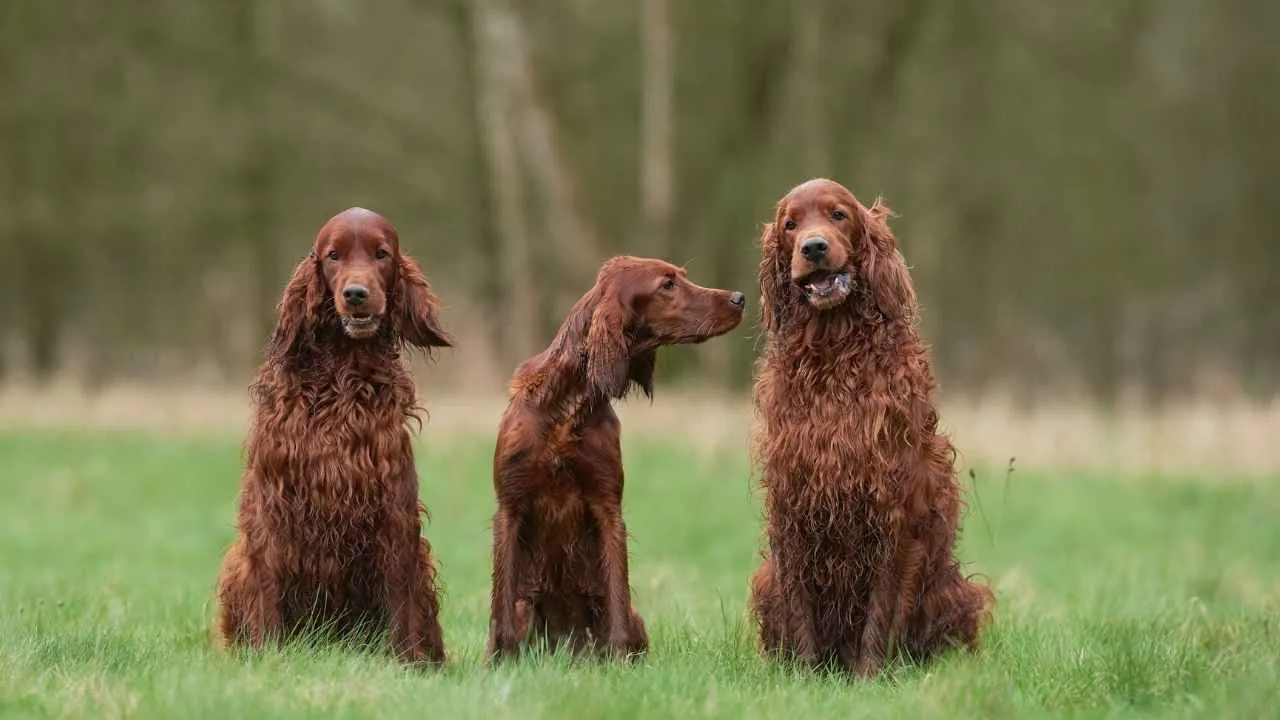
The Irish Setter is a breed that turns heads with its rich, mahogany-red coat and elegant build. But don’t be fooled by their good looks—these dogs are serious hunters with speed, endurance, and a sharp nose. The Irish Setter is your perfect high-energy, high-spirited companion.
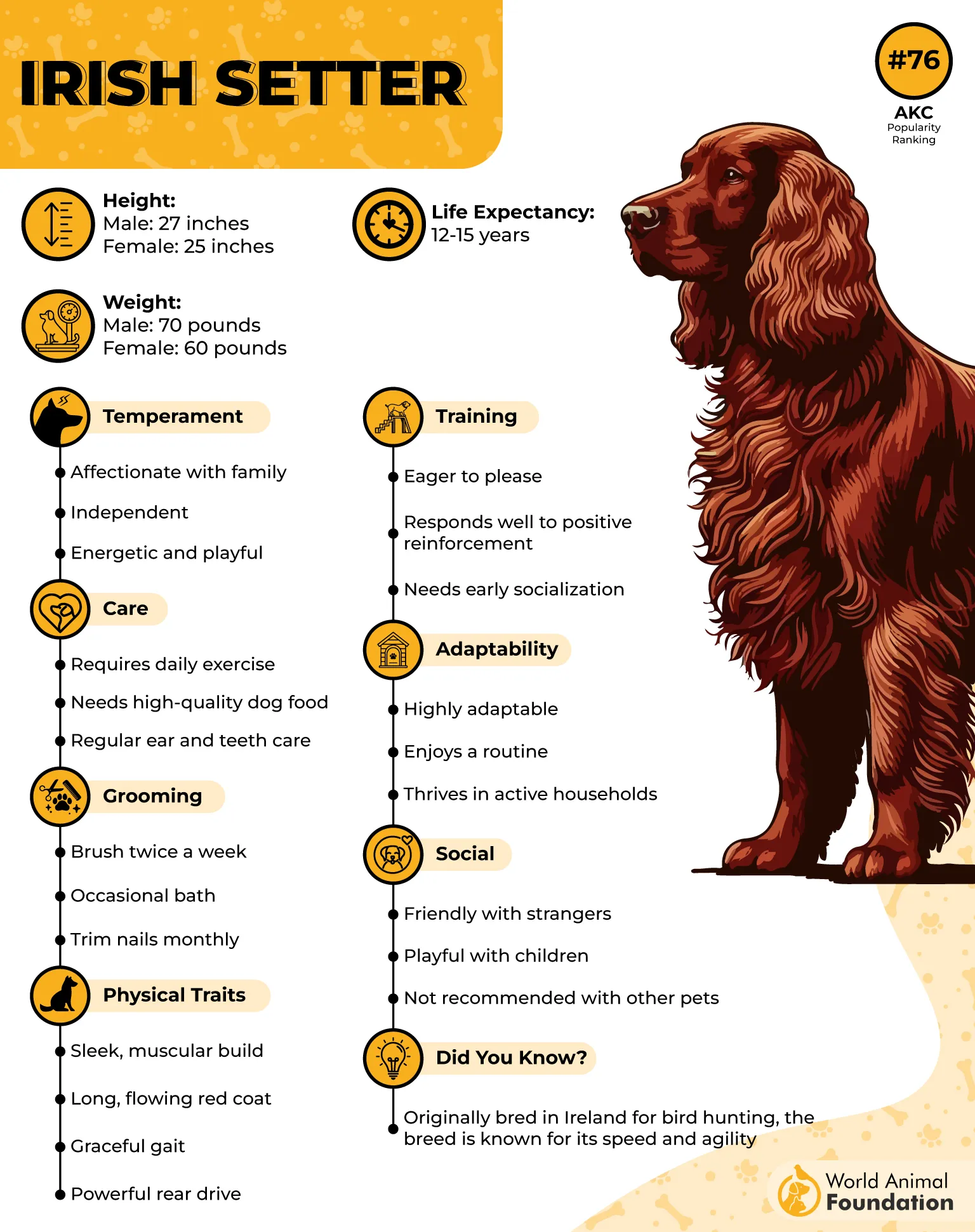
So, what makes them great hunting dogs? For starters, they’re incredibly fast. Built for speed, Irish Setters can outrun and outmaneuver many other hunting breeds. Their long legs and athletic bodies allow them to cover large areas quickly, making them excellent for bird hunting in open fields.
Their sense of smell is off the charts. Irish Setters are gun dogs, working alongside hunters to locate and flush out birds. Their ability to detect game from long distances makes them valuable hunting companions. Once they catch a scent, they move gracefully, pointing and flushing with precision.
But here’s the thing: Irish Setters are not for couch potatoes. They’re high-energy dogs that need constant activity. Without enough exercise, they can become restless, leading to destructive behaviors. Think chewing, digging, or zooming around the house at lightning speed! If you’re looking for a low-maintenance pet, this isn’t your breed.
Training an Irish Setter requires patience and consistency. According to PetMD, they’re intelligent and quick learners but independent, which means they can sometimes be stubborn. Positive reinforcement works best—this breed responds well to praise, treats, and play-based training. Harsh training methods? Forget it!
7. Vizsla

Vizsla is a fast and fearless breed that combines the precision of a pointer, the versatility of a retriever, and the devotion of a best friend. They are agile and energetic, says WebMD. These sleek, golden-rust-colored dogs are built for the hunt, excelling at everything from tracking to retrieving. But they’re not just hunters—affectionate, velcro-like companions that thrive on human connection.
With their lean, muscular build and boundless energy, they move like guided missiles through fields and forests. Their speed makes them perfect for hunting upland game birds, and their ability to cover vast terrain ensures that no game escapes their keen senses.
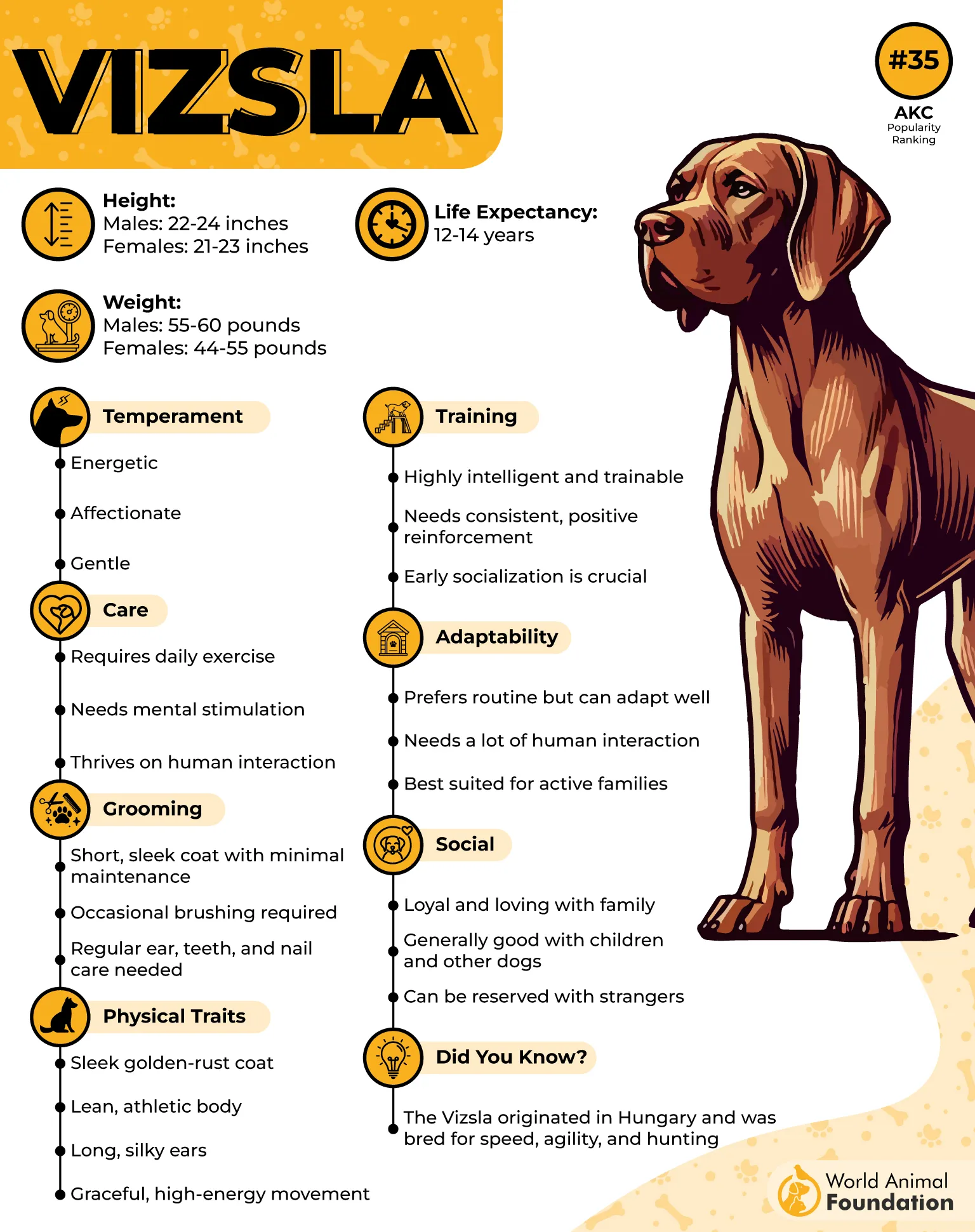
But their secret weapon? Their extraordinary nose. These dogs are natural-born hunters, able to pick up scents from impressive distances. Unlike some breeds that specialize in just one hunting style, Vizslas are versatile gun dogs—they point, flush, and retrieve with remarkable efficiency.
They’re often called “Velcro dogs” because they stick to their owners like glue. Unlike some independent hunting breeds, Vizslas crave constant interaction and companionship. If you’re looking for a hunting partner that doubles as a shadow, couch buddy, and adventure companion, this breed is for you.
Speaking of energy, Vizlas are NOT low-maintenance dogs. These pups need intense exercise—daily! A simple walk around the block won’t cut it. They require long runs, challenging playtime, and hunting drills to stay satisfied. Without enough activity, they become restless, destructive, and full of mischief. What if you’re an active person, though? A Vizsla will be your ultimate adventure buddy.
Conclusion
Brown hunting dog breeds are some of the most versatile and skilled hunting companions, excelling in both upland bird hunting and waterfowl hunting. These intelligent breeds, including the Labrador Retriever, Chesapeake Bay Retriever, and German Shorthaired Pointer, are known for their exceptional retrieving ability, determination, and adaptability in cold conditions. Whether retrieving game from icy waters or tracking furred game in dense forests, these tough dogs showcase their natural hunting ability. The Golden Retriever, Flat-Coated Retriever, and Curly-Coated Retriever are popular retrieving breeds, excelling in flushing and retrieving waterfowl.
Bird dog breeds like the Nova Scotia Duck Tolling Retriever, Boykin Spaniel, and English Springer Spaniel are favored for their ability to point upland birds and flush birds for hunters. These energetic dogs are not only great for hunting birds but also make excellent family pets due to their friendly and affectionate temperament. The Irish Setter and Brittany Spaniel are renowned for their hunting ability, tracking skills, and distinctive floppy ears with white markings or golden rust-colored coats. Other retriever breeds, such as the English Setter and German Wirehaired Pointer, are valued for their retrieving game skills and ability to work in various terrains, from wetlands to dense fields.
Brown hunting dog breeds have been trusted hunting companions for centuries, proving themselves as determined hunters, excellent guide dogs, and loyal family members. Whether you’re a bird hunter in South Carolina or an outdoor enthusiast looking for a versatile dog with a strong retrieving instinct, these breeds stand out in the dog world. With their cold water endurance, retrieving ability, and love for the hunt, they remain a top choice for those passionate about bird hunting and outdoor adventures.


